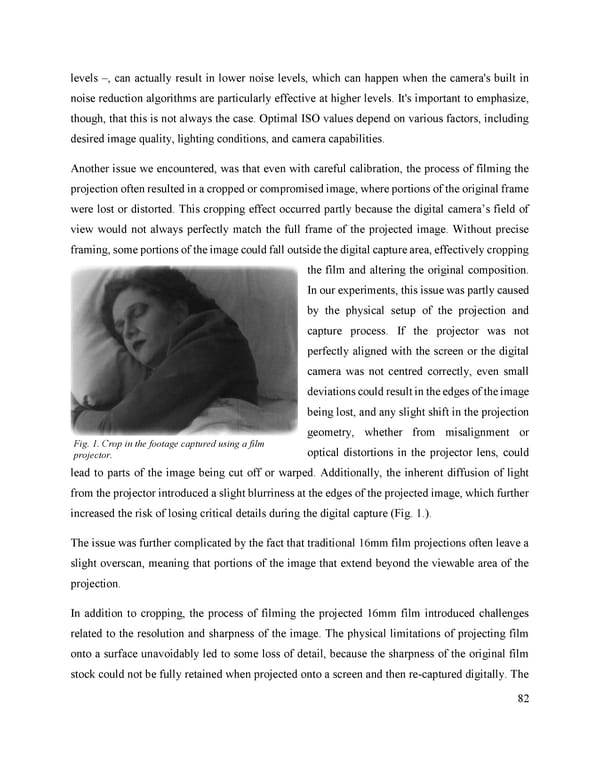levels –, can actually result in lower noise levels, which can happen when the camera's built in noise reduction algorithms are particularly effective at higher levels. It's important to emphasize, though, that this is not always the case. Optimal ISO values depend on various factors, including desired image quality, lighting conditions, and camera capabilities. Another issue we encountered, was that even with careful calibration, the process of filming the projection often resulted in a cropped or compromised image, where portions of the original frame were lost or distorted. This cropping effect occurred partly because the digital camera’s field of view would not always perfectly match the full frame of the projected image. Without precise framing, some portions of the image could fall outside the digital capture area, effectively cropping the film and altering the original composition. In our experiments, this issue was partly caused by the physical setup of the projection and capture process. If the projector was not perfectly aligned with the screen or the digital camera was not centred correctly, even small deviations could result in the edges of the image being lost, and any slight shift in the projection geometry, whether from misalignment or Fig. 1. Crop in the footage captured using a film optical distortions in the projector lens, could projector. lead to parts of the image being cut off or warped. Additionally, the inherent diffusion of light from the projector introduced a slight blurriness at the edges of the projected image, which further increased the risk of losing critical details during the digital capture (Fig. 1.). The issue was further complicated by the fact that traditional 16mm film projections often leave a slight overscan, meaning that portions of the image that extend beyond the viewable area of the projection. In addition to cropping, the process of filming the projected 16mm film introduced challenges related to the resolution and sharpness of the image. The physical limitations of projecting film onto a surface unavoidably led to some loss of detail, because the sharpness of the original film stock could not be fully retained when projected onto a screen and then re-captured digitally. The 82
 Lost Analogue: Exploring Film, Music, and Interdisciplinary Methods in Education Page 82 Page 84
Lost Analogue: Exploring Film, Music, and Interdisciplinary Methods in Education Page 82 Page 84